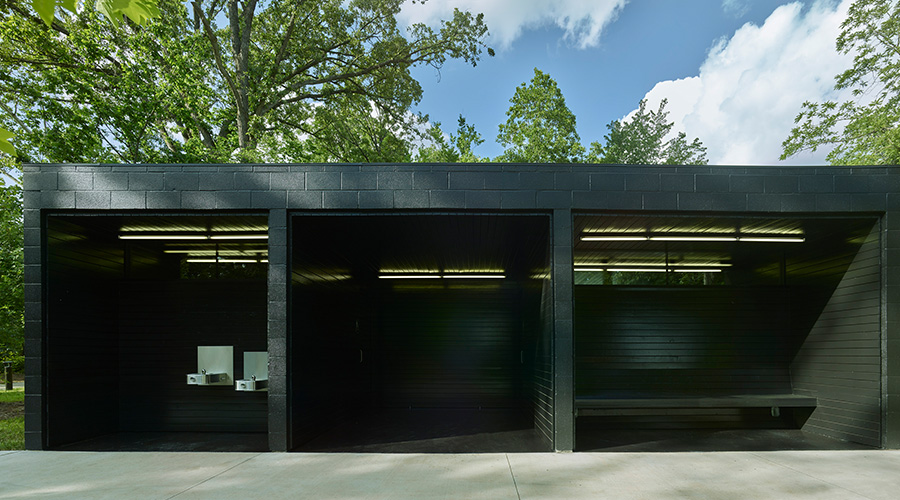Restroom Renovations, Big Benefits
Upgrades can provide easier access, improved hygiene and water savings for managers who plan ahead
Restroom renovations are among the most common projects that institutional and commercial facilities undertake. These upgrades often are designed to bring these areas into compliance with access guidelines, and they give engineering and maintenance managers an opportunity to introduce new and water-saving technology.
Formulating plans for such work requires managers to determine the specific benefits of renovations, understand common trouble spots encountered in planning and carrying out upgrades, and taking steps to maximize the benefits and avoid the problems.
Odor, poor cleanliness and empty paper dispensers rank as the most common complaints from restroom visitors, so it stands to reason that eliminating sources of these complaints, while minimizing water-use and cleaning costs related to restrooms, would be a win-win strategy for the managers and restroom users. Managers can achieve both higher quality and lower costs.
Renovation Benefits
Among the many benefits of restroom renovations are improved sanitation, greater comfort, easier access for all, and lower operating costs. Managers will need to take a closer look at each one in order to prioritize them.
Improved sanitation. Germs, bacteria and illnesses from person to person often spread via contact with unclean restroom fixtures, including toilets, urinals, sinks and paper-product dispensers. Every time a toilet is flushed, up to 10,000 bacteria and viruses can atomize into the air. It takes just one hour for germs on a sink handle to multiply by a factor of 16.
Greater comfort. A fresh, attractive restroom provides a more comfortable environment for the user and eases concerns that accompany using unsanitary or stale-smelling facilities. It also reflects well on the building owner and manager, as well as the organization in general.
Easier access. Many people take for granted the fact that restroom facilities are available and accessible in all modern buildings. This was not always true for those with disabilities, especially in older buildings not subject to post-ADA rules. As organizations upgrade older buildings, ease of access is becoming more accepted and even expected. Accessible restrooms generally are more attractive and comfortable for all users. Many organizations even go beyond the letter of the law as owners and managers benefit from the resulting positive public relations.
Lower costs. Besides improving sanitation and minimizing odors, restroom renovations also can help control costs. For example, they can reduce water use, due to better-controlled flow times and volumes or the installation of waterless fixtures. Cleaner restrooms can lower costs by improving user health. Estimates of savings generated by improved employee absence are about $400 per absence, while a healthy employee on the job is 20 percent more productive than one who is sick, and he or she doesn't pose the risk of spreading illness.
The two most effective means of maximizing benefits and minimizing problems with restroom renovations are improved hygiene and standardized custodial procedures.
Improving Hygiene
When it comes to hygiene, restroom fixtures are a major source of cross-contamination, in spite of custodial efforts to clean and disinfect daily because many users might contact the fixtures between cleanings. Products such as automatic hands-free fixtures can enhance both the perception and the reality of cleanliness. Among the most common examples of automated and manual technology that can improve cleanliness and sanitation — while also improving compliance with ADA requirements — include these:
Odor control. Automatic sanitizers release disinfectant with each flush. This cleansing between uses ensures that the fixture is clean and scale free with less need for labor-intensive manual cleaning.
Urinal and toilet flush valves. Technicians can easily install new hands-free, sensor-operated flushers to existing fixtures. These units are battery-operated and require battery changes only once a year.
Sink faucets and soap dispensers. These automatic touch-free devices eliminate a major source of cross-contamination by making hand washing much more sanitary. Properly installed, they meet ADA requirements.
Air dryers. Touch-free automatic hand dryers work fast and can help maintain the high standards of a touch-free restroom.
Toilet-seat cleaning. Automating this process provides a hands-free way for users to ensure a higher degree of sanitation. A wave of a hand over the motion sensor activates a mechanism that automatically cleans, disinfects and dries the toilet seat in about 15 seconds. The entire process occurs without contact, ensuring sanitary conditions.
Waterless urinals. In addition to being sanitary and odor-free because of their liquid-seal designs, these systems can substantially reduce annual water use.
Increased attention to design elements also can benefit the organization. For example, plastic stalls are tougher than metal and anchored to walls instead of floors, so they reduce cleaning time and resist graffiti and vandalism.
Also, floors using tile and grout require extra care, cleaning material and time to keep them sanitary. Special grout cleaning chemicals are needed periodically, their standing time is longer to penetrate the dirt embedded in the grout, and cleanup to remove excess liquid takes longer.
Replacing this flooring with seamless, one-piece epoxy flooring or a similar membrane will require less maintenance labor while maintaining a bright, pleasant appearance that is free from dingy, gray grout lines.
Standardized Cleaning
Standardized custodial procedures have a very attractive payback because employees who maintain and improve the appearance of restrooms use the same methods and materials. Eliminating cleaning methods that are sometimes confusing and conflicting increases productivity.
Standardization begins with the way custodians are hired, and it continues through their daily practices. The hiring process is more effective if managers use a comprehensive job description, one that shows major responsibilities and duties, along with the job’s physical and mental requirements. These minimum requirements ensure that each new custodial employee can handle job responsibilities and follow standard practices and schedules.
Standard practices include methods for doing each task based on daily and weekly schedules and longer-term priorities. Following standard practices, rather than each person using his or her own methods, ensures that workers take proper steps and adhere to proper frequencies.
The habits formed through use of standard practices ensure uniformity. These practices include the use of exact amounts and types of cleaners, supervised dilution rate, proper contact times for disinfectants, the use of mirrors to ensure proper cleaning under water rims, and proper frequency of mop solution changes rather than just pushing dirty water around.
Measuring Success
Even after a thorough renovation, some deficiencies can go undetected or unidentified — especially the microbial kind — without professional assessment. Before managers undertake this step, they should have a specific objective in mind, such as identifying the source of odors — by surface tests to determine quantity and type of bacteria present and effectiveness of cleaning solutions and methods — and eliminating the offending odor.
Testing performed by a professional that incorporates indoor-air sampling methods can give managers the extra measure of assurance that their efforts are effective in maintaining a pleasant, attractive, odor- and germ-free restroom environment. Besides all of the tangible costs and functional benefits, managers also will reap the intangible but often substantial benefit that a positive impression can make on building occupants and visitors.
Tackling Access Troubles
Among the challenges that maintenance managers often face when planning restroom renovations is ensuring compliance with access guidelines.
Renovation might entail meeting higher standards than were required before the upgrades, but managers should review all facets of the project and the adjacent facility areas to make sure that new building-code requirements are met.
These requirements start with signage showing the shortest route to the accessible facility and proper signage height from the floor, and they include:
- upgrading from round door knobs to lever handles
- ensuring proper door swing clearances, into both the restroom and the stall
- planning for proper height of fixtures, grab bars and dispensers.
Hands-free fixture upgrades also might improve the facility for everyone and meet access guidelines. For more information on codes and guidelines:
|
Related Topics:











